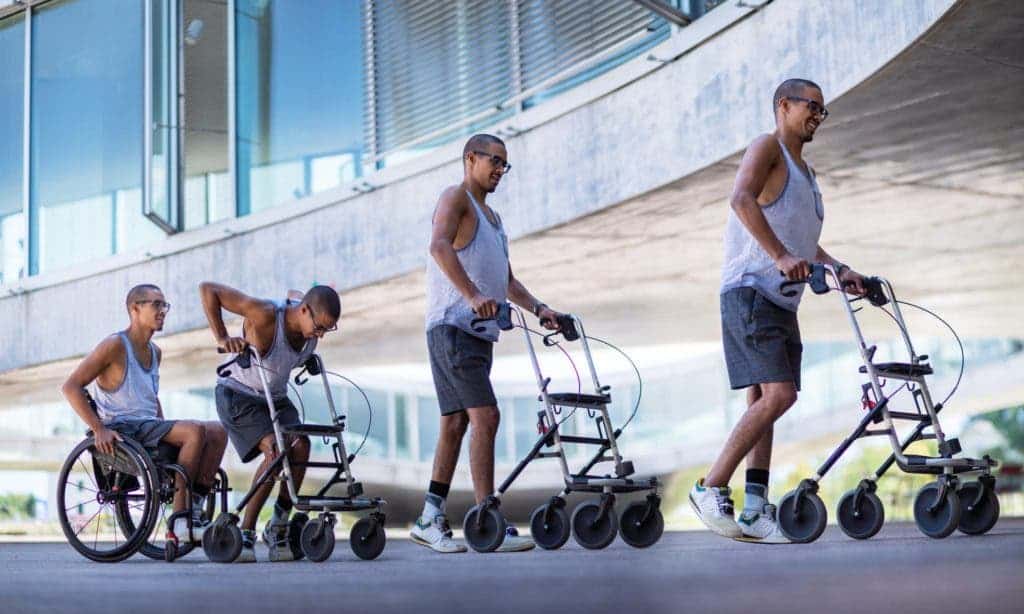
Thanks to a combination of electrical stimulation and rehabilitation, two men who were paralyzed from the waist down can now stand and walk a few steps, with the aid of crutches. The innovative treatment is not a cure for paralysis but it does show that spinal nerves can be regenerated with properly targeted stimulation.
Stimulating the spinal cord as the brain would naturally is key
David Mzee suffered a terrible gymnastics accident in 2010 which left him paralyzed. After intense rehabilitation in Zurich, Switzerland, Mzee was able to regain control of his upper body and some degree of control over his right leg, but any further improvement was thought to be out of grasp. In 2011, Gert-Jan Oskam became paralyzed in a traffic accident while he was riding his bicycle.
Both patients could not walk before researchers at Swiss Federal Institute of Technology in Lausanne recruited them for a new therapy that involves sending electrical pulses to their spinal cord. Crucially, these electrical pulses fire discontinuously, timed with the paraplegic’s assisted lower body movements (i.e. walking in a supportive harness on a treadmill).
Today, both patients can make a few steps on their own — something that doctors told them they were unlikely to do again in their lifetimes.
The Swiss researchers who performed the therapy say that the electrical signals encourage nerves in the spinal cord to form new connections, improving muscle control and coordination. But discontinuous nerve stimulation seems to be very important. Earlier, other researchers reported how paraplegic patients were able to walk a handful of steps while their spinal cords were zapped with electricity in certain sites. However, none of these patients was able to walk when the electrical stimulation was turned off.
“They have both recovered control of their paralysed muscles and I don’t think anyone with a chronic injury, one they’ve had for six or seven years, has been able to do that before,” Grégoire Courtine, a neuroscientist at the Swiss Federal Institute of Technology in Lausanne, told The Guardian. “When you stimulate the nerves like this it triggers plasticity in the cells. The brain is trying to stimulate, and we stimulate at the same time, and we think that triggers the growth of new nerve connections.”
Mzee and Oskam still have to use wheelchairs but the quality of their lives has improved dramatically. It remains to be seen whether they can advance even further — which is very well possible.
Courtine says that the sooner such a procedure can be implemented, the likelier it is that a patient can regain more control over the lower body. In the future, the researchers plan on repeating the therapy with paraplegics whose injuries are no older than a month.
The findings were reported in the journal Nature.


